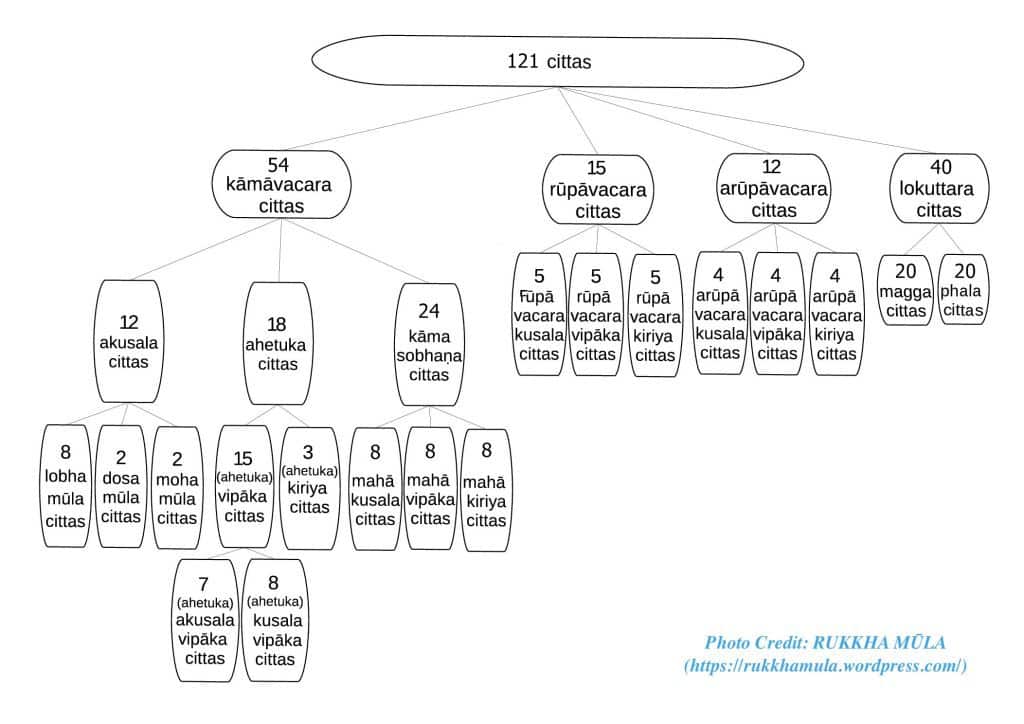Lesson 16
An Overview of the Citta Classification
We have now studied the basic classification of the 89 or 121 cittas.
Let us look at the entire classification one more time:

The above chart shows the classification of 89 cittas. There are 89 cittas in total when the lokuttara cittas are taken as 8 in number – that is – when magga cittas are taken as 4 in number and phala cittas are also taken as 4 in number.
Let us see the chart for classification of cittas if their total number is 121:

When the magga cittas are taken as 20 in number and phala cittas are also taken as 20 in number – the total number of lokuttara cittas becomes 40.
As a result the total number of cittas now becomes 121 in number.
So remember this point –
When we consider the total number of cittas as 89 – it means that we consider the lokuttara cittas to be 8 in number. [ magga cittas 4 + phala cittas 4 ]
When we consider the total number of cittas as 121 – it means that we are taking the lokuttara cittas to be 40 in number. [ magga cittas 20 + phala cittas 20 ]
This is so because each of the 4 magga cittas can be of 5 types, depending on the jhāna level.
Study the Lesson 15 one more time if you are not clear about this point.
Revise these lessons well before you continue learning.
It is good that you have learnt so much.
May this kusala kamma help you to abide by the Lord Buddha’s Teaching and gain greater and greater happiness.
When you can recollect the lessons at ease, proceed further to ‘FURTHER CLASSIFICATIONS OF CITTAS’. They are quite easy. But finish these lesson first before you proceed.
To read more from the original source: Lesson 1 – Citta – RUKKHA MŪLA (wordpress.com)
![]()









